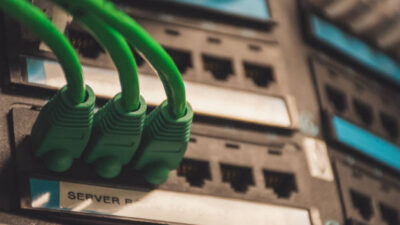Will all wireless instrumentation really be completely wireless? Many devices are not suited to battery powering, so is removing just the data cable enough? What are your options for semi-wireless devices?
If you’ve been following the discussions of wireless communication for field instrumentation, you will have certainly noticed that many wireless instrumentation devices are now available for immediate purchase rather than just coming attractions. You may have also noticed that most of the offerings in the initial rounds are toward the less-complex end of the device spectrum, things like temperature and pressure sensors. More complex things like flowmeters have been slower in coming.
The apparent method in this selection is that vendors are bringing out devices that have relatively low power consumption, and as such are suitable for battery powering. Suppliers are concerned first with showing you that these don’t need wires of any kind, neither data nor power. The problem is that the list of field instrumentation technologies suitable for battery powering is pretty short.
Vendors have a very good handle on the power consumption characteristics of device radios. Once you’ve determined the amount of data to be transferred, the update rate frequency, and the amount of repeater traffic on a device, you can calculate the power need very accurately and then lay this out against your various battery options. You simply choose a combination that provides what you need for the application. A pair of lithium-thionyl chloride D-cells can power a radio for 10 years if you don’t overdo it with reporting requirements. The killer for a self-contained device is that the sensing technology has to take power from the same batteries.
Radios gain their efficiency by sending their data in a matter of milliseconds and then going to sleep between transmissions. For maximum battery life, the transducer technology has to match that quick action, but all don’t. Characteristics vary widely, but all don’t snap into action immediately. The transducer and its processor may need to stabilize for a while after the power goes on before their measurement is final. That may only be a few milliseconds as well, but when multiplied over the number of times it has to happen, that can be an eternity relative to the battery life. Needless to say, vendors that are serious about expanding their wireless capabilities are finding new ways to optimize these issues. Back in the days of loop power, these weren’t particular concerns but things have changed.
Obviously there are technologies that will probably never be suited to battery power. A large Coriolis or magnetic flowmeter may never happen, although the power needs of these products have gone down considerably in the last few years. So what are the opportunities for these semi-wireless devices that require external power?
Many such devices will likely never be made in an integrated wireless package. Adding a built-in radio doesn’t offer all that big an advantage over buying a generic transmitter, although the vendor community will make that determination based on market demand. Honeywell has released an externally-powered wireless radar level device, so we’ll have to see how these offerings play out.
Removing the need to pull a new data cable is obviously an advantage, but the exact cost implications of that will be very specific to the given site and application.
In most plant situations, power sources are probably closer than a marshalling cabinet or relevant I/O connection point. However you don’t just plug instrumentation into the closest outlet. Most plants have instrumentation-grade power that runs in parallel to lighting and general circuits. Instrumentation-grade power is better conditioned, protected, and configured such that it can’t be turned off easily by mistake, which is far less critical for lighting circuits. So the distance and cost of pulling instrument-grade wiring to a device will also be site specific.
If you have a number of devices on a given unit that all need wireless communication, it may be simpler to use a wireless remote I/O device that gathers the data and sends it back using one wireless Ethernet radio rather than individual transmitters. Such systems are available from a range of suppliers, including:
Beckhoff
Hirschmann
National Instruments
Opto22
Phoenix Contact
ProSoft
Weidmuller
And others.
Wireless instrumentation is a tool that can help advance control and monitoring in your plant. However, like all tools, it has its limitations. Use it for the right jobs, wherever those may be, after you have weighed all the relevant options.
-Peter Welander, process industries editor, [email protected],
Control Engineering Process Instrumentation & Sensors Monthly
Register here to select your choice of free eNewsletters .



